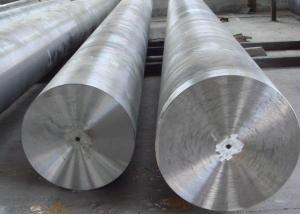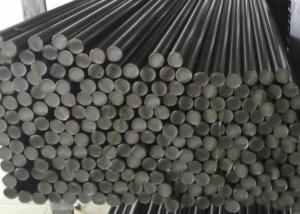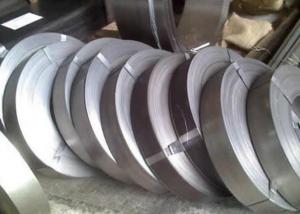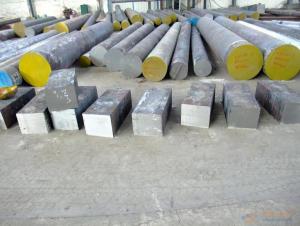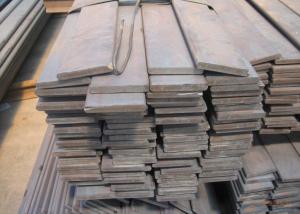Steel SKT4 Alloy Steel Round Bar Special Steel
- Loading Port:
- China main port
- Payment Terms:
- TT OR LC
- Min Order Qty:
- 25 m.t.
- Supply Capability:
- 10000 m.t./month
OKorder Service Pledge
OKorder Financial Service
You Might Also Like
Item specifice
Chemical Composition%
| Country | Standard | C | Si | Mn | Cr | Ni | Mo | S | P | Other |
| China(GB) | 5CrNiMo | 0.50-0.60 | ≤0.40 | 0.50-0.80 | 0.50-0.80 | 1.40-1.80 | 0.15-0.30 | ≤0.030 | ≤0.030 | - |
| USA(ASTM) | L6 | 0.65-0.75 | 0.20-0.40 | 0.55-0.65 | 0.65-0.85 | 1.25-1.75 | 0.25 | - | - | V:0.25 |
| Germany(DIN) | 1.2713 | 0.50-0.60 | 0.10-0.40 | 0.65-0.95 | 0.60-0.80 | 1.50-1.80 | 0.25-0.35 | - | - | V:0.07-0.12 |
| Japan(JIS) | SKT4 | 0.50-0.60 | ≤0.35 | 0.60-1.00 | 0.70-1.00 | 1.30-2.0 | 0.20-0.50 | ≤0.030 | ≤0.030 | - |
Available Size
| Rolled Round Bar | φ12-80mm |
| Forged Round Bar | Φ85-600mm |
Heat Treatment
| Processing | Temperature ℃ | Hardness |
| Anneal | 760-780 | 197-241HB |
| Quenching | 830-860 | 53-58HRC |
| Tempering | 490-510 | 44-47HRC |
| 520-540 | 38-42HRC | |
| 560-580 | 34-37HRC |
Characterstics
| 1.High toughness and strength | |||||||
| 2.Higher abrasion resistance | |||||||
| 3.Remaining hardness of HB300 at 500℃ | |||||||
| 4.Insensitive to tempering brittleness due to addition of Mo |
Applications: Suitable for large and medium sized forging dies with thickness of 250-350mm for automobiles,tractors,transmission gears,front axle beams and rear axles of automobiles,and forging dies for engineering machine components.
Product Show:
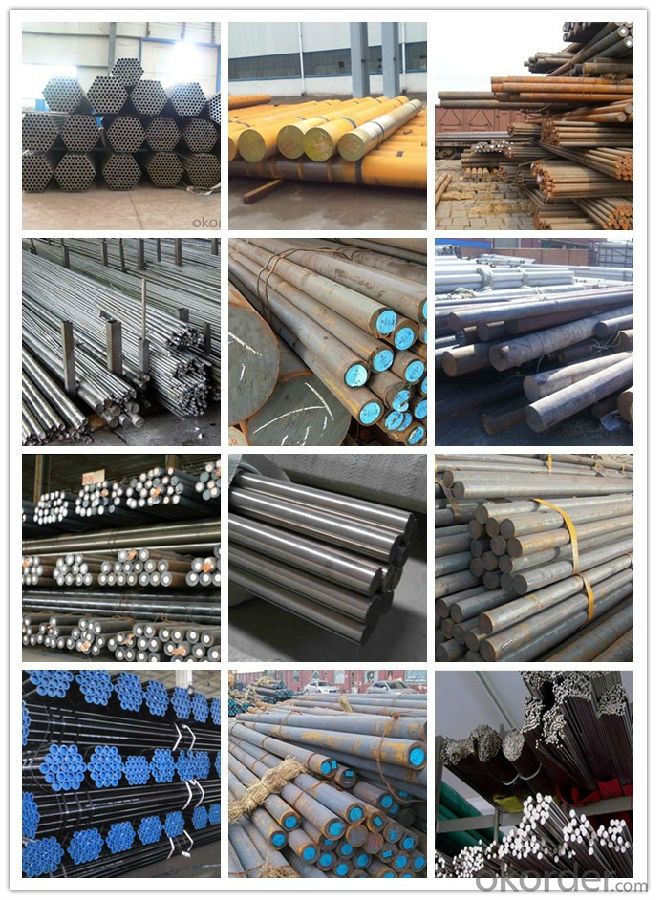
Workshop Show:
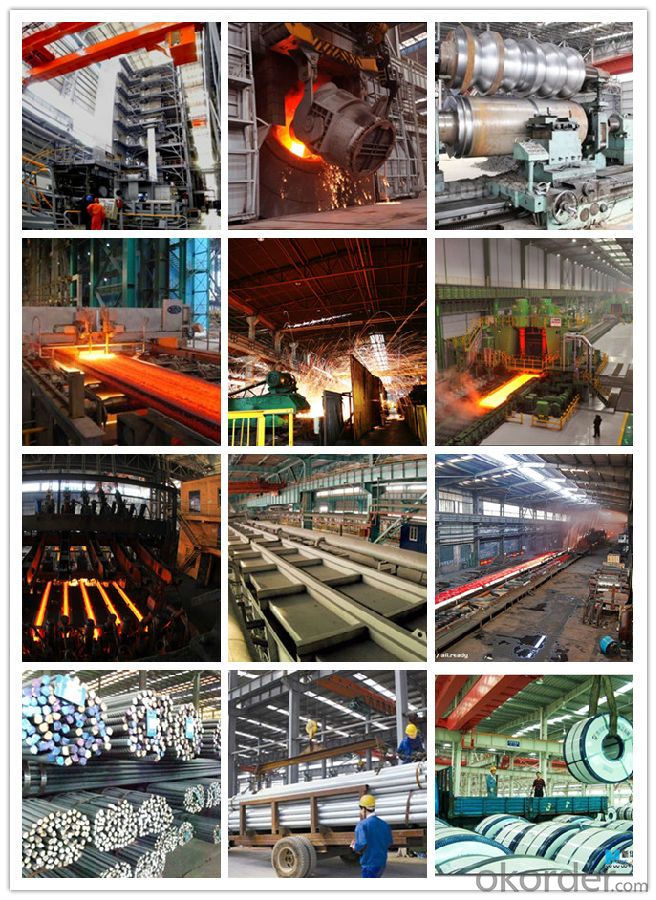
1, Your advantages?
professional products inquiry, products knowledge train (for agents), smooth goods delivery, excellent customer solution proposale
2, Test & Certificate?
SGS test is available, customer inspection before shipping is welcome, third party inspection is no problem
3, Payment Terms?
30% TT as deposit and 70% before delivery.
Irrevocable L/C at sight.
4, Trading Terms?
EXW, FOB, CIF, FFR, CNF
6, After-sale Service?
WE provides the services and support you need for every step of our cooperation. We're the business partner you can trust.
For any problem, please kindly contact us at any your convenient time.
We'll reply you in our first priority within 24 hours.
- Q:What are the common applications of stainless special steel?
- Stainless special steel is commonly used in a wide range of applications due to its unique properties and characteristics. Some of the most common applications include kitchenware and cookware, cutlery, medical equipment, automotive parts, aerospace components, construction materials, and various industrial machinery. Its corrosion resistance, high strength, durability, and aesthetic appeal make it a preferred choice in these industries.
- Q:How does special steel perform under extreme cold conditions?
- Special steel is specifically engineered for optimal performance in frigid conditions. It demonstrates exceptional resistance to low temperatures and retains its strength and toughness even in freezing conditions. This is accomplished by incorporating alloying elements, such as nickel, chromium, and molybdenum, which enhance the steel's ability to remain pliable and resist brittle fractures. In frigid temperatures, regular steel tends to become brittle and prone to easy fracturing. However, special steel showcases remarkable toughness and resilience. It can endure extremely low temperatures while preserving its mechanical properties, rendering it suitable for various applications in cold settings. Furthermore, special steel boasts excellent corrosion resistance, a critical attribute when exposed to extreme cold environments. Cold environments can expedite corrosion due to factors like moisture, salt, and freezing and thawing cycles. Nevertheless, the corrosion-resistant nature of special steel prevents deterioration and upholds its structural integrity. Moreover, special steel possesses exceptional thermal conductivity, facilitating efficient heat transfer even in exceedingly low temperatures. This characteristic proves essential in applications where heat transfer plays a vital role, such as cryogenic systems or cold storage facilities. All in all, special steel's outstanding performance in extreme cold conditions positions it as an ideal material for a multitude of industries and applications, including aerospace, oil and gas, automotive, and construction. Its capacity to maintain strength, toughness, corrosion resistance, and thermal conductivity at low temperatures ensures reliable and secure operation in severe cold environments.
- Q:How does special steel contribute to the renewable energy aftermarket industry?
- Special steel plays a crucial role in the renewable energy aftermarket industry by enhancing the efficiency, durability, and cost-effectiveness of renewable energy systems. One of the primary applications of special steel in this industry is in the manufacturing of wind turbine components. Wind turbines require high-strength and corrosion-resistant materials to withstand the harsh environmental conditions and generate electricity efficiently. Special steel alloys, such as high-strength low-alloy (HSLA) steel and stainless steel, offer superior mechanical properties, fatigue resistance, and excellent corrosion resistance, making them ideal for wind turbine tower structures, rotor blades, and other critical components. By using special steel in wind turbine manufacturing, the renewable energy aftermarket industry can benefit from increased turbine lifespan, reduced maintenance costs, and improved energy output. The strength and durability of special steel enable taller and larger wind turbine towers, allowing for the installation of turbines in areas with lower wind speeds. This expansion of suitable locations helps to maximize the energy production potential, making wind energy a more viable and widespread renewable energy source. Furthermore, special steel also contributes to the renewable energy aftermarket industry through its application in solar power systems. Solar panels require robust mounting structures to support the weight of the panels, withstand wind and snow loads, and ensure optimal sun exposure. Special steel, with its high strength-to-weight ratio and corrosion resistance, is commonly used in these mounting structures, providing long-lasting and reliable support for solar panels. In addition to wind and solar energy, special steel finds applications in other renewable energy systems such as hydroelectric power plants and geothermal systems. These industries benefit from the corrosion resistance and resistance to extreme temperatures offered by special steel, ensuring the longevity and efficiency of the equipment. Overall, special steel significantly contributes to the renewable energy aftermarket industry by enabling the production of reliable, durable, and efficient renewable energy systems. Through its use in wind turbines, solar panels, and other renewable energy technologies, special steel helps to enhance the performance and longevity of these systems, ultimately driving the growth and adoption of renewable energy sources worldwide.
- Q:How is special steel used in the textile supply chain?
- Special steel is used in the textile supply chain for various applications such as manufacturing textile machinery, equipment, and tools. The high strength and durability of special steel make it ideal for creating components that can withstand the demanding conditions of textile production, including high temperatures, corrosion, and heavy loads. It is commonly used in the production of spinning machines, looms, needles, and other crucial parts, ensuring efficient and reliable textile manufacturing processes.
- Q:What are the different casting methods used for special steel?
- There are several different casting methods that are commonly used for special steel, depending on the specific needs and requirements of the application. These methods include investment casting, sand casting, continuous casting, and centrifugal casting. 1. Investment casting: This method involves creating a wax pattern of the desired part, which is then coated with a ceramic shell. The wax is melted out, leaving behind a hollow shell, which is then filled with molten steel. Once the steel has solidified, the ceramic shell is broken away, and the final part is obtained. Investment casting allows for complex shapes and intricate details to be created accurately, making it suitable for producing high-quality and precise special steel components. 2. Sand casting: Sand casting is one of the oldest and most widely used casting methods. It involves creating a mold from a mixture of sand and a binder, typically clay. The mold is formed by packing the sand mixture around a pattern of the desired part. Molten steel is then poured into the mold, filling the cavity, and left to cool and solidify. Sand casting is a versatile and cost-effective method, suitable for producing large and heavy special steel components. 3. Continuous casting: This method is commonly used for producing long steel products, such as bars, rods, and billets. It involves continuously pouring molten steel into a water-cooled mold, which solidifies the outer surface of the steel. The solidified steel is then continuously withdrawn from the bottom of the mold, while more molten steel is poured in from the top. Continuous casting allows for the production of high-quality, defect-free steel with a consistent cross-section. 4. Centrifugal casting: In this method, the mold is rotated at high speeds while molten steel is poured into it. The centrifugal force pushes the molten steel towards the outer walls of the mold, resulting in a dense and compact casting with improved mechanical properties. Centrifugal casting is particularly suitable for producing cylindrical or tubular special steel components, such as pipes and rings. Overall, the choice of casting method for special steel depends on factors such as the complexity of the part, the required quality and accuracy, the size and shape of the component, and the production volume. Each method has its advantages and limitations, and careful consideration is necessary to select the most appropriate casting method for a specific application.
- Q:What are the properties of magnetic steel?
- Magnetic steel is characterized by its ability to attract and hold a magnetic field. It is typically a hard and strong material, making it suitable for various applications such as in the production of magnets, electrical transformers, and motors. Magnetic steel also has high permeability, allowing it to efficiently conduct magnetic flux. Additionally, it exhibits good resistance to corrosion, which helps maintain its magnetic properties over time.
- Q:What are the properties of magnesium alloys?
- Magnesium alloys exhibit a combination of desirable properties, including low density, high strength-to-weight ratio, good corrosion resistance, excellent machinability, and high thermal conductivity. They also possess good damping capacity, making them suitable for applications requiring vibration reduction. Additionally, magnesium alloys can be easily cast, forged, and welded, allowing for a wide range of manufacturing processes. However, they are prone to ignite under certain conditions and can be more expensive compared to other metals.
- Q:What are the effects of different heat treatment processes on special steel?
- Special steel can undergo various heat treatment processes that significantly impact its properties and performance. These processes are designed to modify the steel's microstructure, influencing its hardness, strength, toughness, and other mechanical properties. One widely used heat treatment process is annealing, which entails heating the steel to a specific temperature and gradually cooling it. Annealing serves to alleviate internal stresses, enhance machinability, and improve the steel's ductility. Additionally, it refines the grain structure, promoting uniformity and decreasing the likelihood of cracks or defects. Another heat treatment process is quenching, which involves heating the steel to a high temperature and rapidly cooling it by immersing it in a quenching medium like oil or water. This process results in the formation of a hardened microstructure, augmenting the steel's hardness and resistance to wear. However, quenching can also render the steel brittle, which is why tempering is often performed subsequently. Tempering encompasses reheating the quenched steel to a lower temperature and maintaining it there for a specific duration. This process reduces the brittleness caused by quenching and enhances the steel's toughness and ductility. The resulting microstructure strikes a balance between hardness and toughness, rendering the steel suitable for applications necessitating both strength and impact resistance. Other heat treatment processes, such as normalizing and stress relieving, can also be employed to attain specific properties in special steel. Normalizing entails heating the steel above its critical point and allowing it to cool in still air. This process refines the grain structure and improves the steel's strength and machinability. Conversely, stress relieving aims to eliminate residual stresses from the steel by heating it below its critical point and gradually cooling it. In conclusion, the effects of various heat treatment processes on special steel are manifold. These processes can modify the steel's microstructure, leading to alterations in hardness, strength, toughness, and other mechanical properties. By selecting the appropriate heat treatment process, manufacturers can customize the steel's characteristics to meet specific requirements, ensuring optimal performance and longevity.
- Q:How does the corrosion resistance of special steel compare to regular steel?
- The corrosion resistance of special steel is generally superior to that of regular steel due to its unique composition and additional alloying elements that enhance its durability and protect it from corrosion.
- Q:How does special steel contribute to the defense and security industry?
- Special steel plays a crucial role in the defense and security industry by offering enhanced strength, durability, and resistance to extreme conditions. This type of steel is specifically designed to meet the unique demands of the industry, ensuring that military equipment and infrastructure can withstand the most challenging environments and threats. One significant contribution of special steel to the defense and security sector is in the manufacturing of armored vehicles and tanks. These vehicles require high-strength steel to protect military personnel from ballistic and explosive threats. Special steel provides the necessary toughness and resilience to withstand impacts, ensuring the safety of soldiers on the battlefield. Furthermore, special steel is also instrumental in the production of naval vessels and submarines. The maritime environment is highly corrosive, with saltwater and harsh weather conditions posing significant challenges. By utilizing special steel, naval ships can be constructed with superior corrosion resistance, extending their lifespan and reducing maintenance costs. In addition to its applications in vehicle and vessel manufacturing, special steel is vital for the production of military-grade weaponry and ammunition. The high strength and durability of this steel ensure that firearms, missiles, and other weapons can withstand extreme forces and function reliably in critical situations. This reliability is of utmost importance in the defense and security industry, where the failure of weapons could have severe consequences. Moreover, special steel also contributes to the construction of critical infrastructure for defense purposes. This includes structures such as military bases, bunkers, and communication towers. Special steel's ability to withstand extreme temperatures, high pressures, and other challenging conditions ensures the reliability and longevity of these structures, enhancing national security. In summary, special steel's unique properties, including high strength, durability, and resistance to extreme conditions, make it an essential component in the defense and security industry. By incorporating this material into military equipment, vehicles, weaponry, and infrastructure, defense organizations can ensure the safety, reliability, and effectiveness of their operations, ultimately contributing to national security.
1. Manufacturer Overview |
|
|---|---|
| Location | |
| Year Established | |
| Annual Output Value | |
| Main Markets | |
| Company Certifications | |
2. Manufacturer Certificates |
|
|---|---|
| a) Certification Name | |
| Range | |
| Reference | |
| Validity Period | |
3. Manufacturer Capability |
|
|---|---|
| a)Trade Capacity | |
| Nearest Port | |
| Export Percentage | |
| No.of Employees in Trade Department | |
| Language Spoken: | |
| b)Factory Information | |
| Factory Size: | |
| No. of Production Lines | |
| Contract Manufacturing | |
| Product Price Range | |
Send your message to us
Steel SKT4 Alloy Steel Round Bar Special Steel
- Loading Port:
- China main port
- Payment Terms:
- TT OR LC
- Min Order Qty:
- 25 m.t.
- Supply Capability:
- 10000 m.t./month
OKorder Service Pledge
OKorder Financial Service
Similar products
New products
Hot products
Related keywords























